300 Lbs of Epoxy Poured in 90 Minutes
Homer makes boats.
A while back I showed you some of the Bay Weld shop where they make outstanding Aluminum boats. Their largest was a research vessel for Arctic seas.
Last week I was able to visit the wood/plastic shop of Eric Sloth; where they are starting construction on a new fiberglass Catamaran. This one is to be a personal boat for his son Micha.
The task for the day will be laying up a foam core for the bottom of the center cabin.
They have a giant super flat table for vacuum forming panels and all the various parts of the structure. They have a foam core board that has scoring about 3/8″ deep and apart to facilitate the infusing of the epoxy resin and also serve as scarfing to allow the boards to be slightly bent where necessary.
Here is the table with a jig on the front to provide the upturned shape at the bow. The table is 12’x30′ and the panel is about 9’x28′.
The pour has begun, it is the dark area in the middle of the panel.
About 20 minutes later and progressing very well, no leaks. On the right in this picture are four panels about 5’x28′ that were poured earlier and will form the bulkheads of the twin hulls.
In this picture the pour is over halfway done. They start in the middle and work their way out to each end. Each cross tube is fed from a row of five gallon buckets on the right side of the table.
This 90 minute pour is a result of many days of preparation. Nylon cloth is laid down first to supply a parting agent to prevent the finished product from sticking to the table. Then comes the fiberglass cloth, foam board, another layer of cloth, another layer of nylon cloth and finally the top layer of plastic sheeting. The plastic sheeting forms a bag around the entire panel with the table top as the bottom and the plastic sheeting as the top. The sheeting is glued down to the table around the perimeter with 1/8′ x 1/2″ butyl tape.
The whole thing is connected to a vacuum pump with one hose. Seen here running from the bag (center front) to the pump on the far wall. A large section of PVC pipe (seen here mounted high on the left wall) serves as a separator tank to let any liquid particles settle out rather than go through the vacuum pump.
The resin is introduced in the middle of the panel through flexible plastic tubes running across the top of the panel inside the “bag”. The resin is mixed in 4 gallon batches at the top of the table.
The resin is a 3:1 resin/catalyst mix that must be thoroughly mixed and then has a short pot life. The pot life of any resin mix depends on how it is stored during that time after mixing. A bucket of mixed resin feeds on the heat generated by the chemical reaction going on in the mass. If it is quickly poured out into thin layers, the “working time” is much longer.
In a vacuum pour there is no easy way to pour it out in thin layers but the four gallon batches get sucked into the panel quickly enough to get to a final resting position well before it starts to harden. He will be mixing up about 12 of these buckets.
The mix gets just a few minutes of agitation and then goes to the pour.
Each bucket at the pour feeds two of the tubes that suck the resin out and deliver it to the top of the panel. The tube on the right in the bucket below has finished supplying the panel and has been clamped off permanently. The tube on the left is still flowing resin to the panel. Thus the pour proceeds from right to left, with all tubes clamped off when finished.
Communication is critical. Here the pour master is monitoring the right side of the pour while Micha works the left side. The mixer just keeps delivering resin to each as needed. You can see the leading edge of the resin flow out in the middle of the panel.
Here Micha is preparing to open the valve to feed the pour. The left side leading edge is right in front of him.
They completed the resin infusion and let it cure overnight. After curing and clean up they’ll turn it over and start building the hulls on the upside down panel. I’ll stop by and get some more photos as they progress.
Weather is perfect for writing and chili today. Light snow and no wind.
Here we are after a few days of cleanup:
This is the finished panel turned upside down and ready for building the hulls. This is the view from the stern. The foam is in two layers and appears to be 1 1/2″ thick. 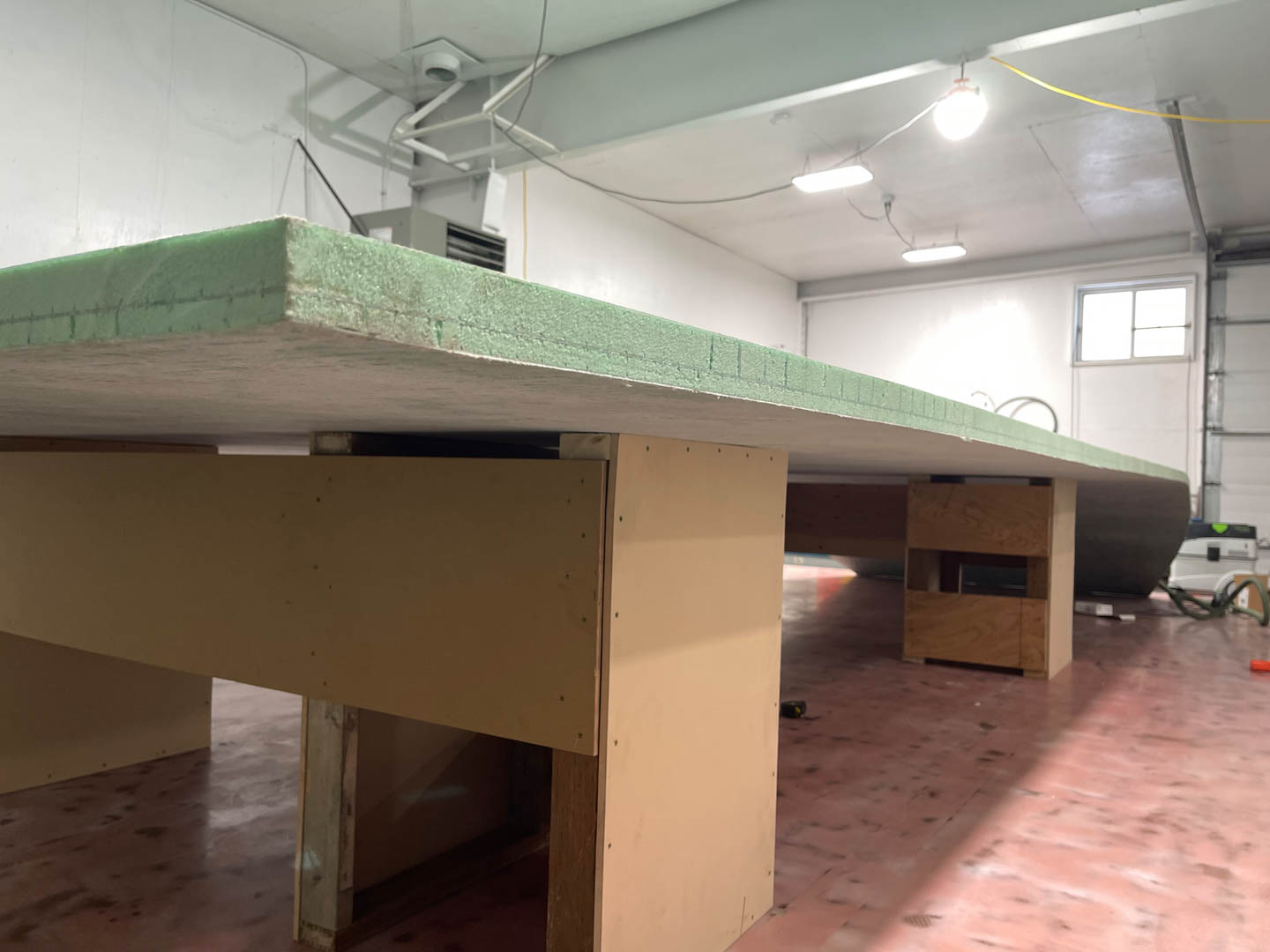
And this is from the bow.
When I went back to get a shot of the finished panel they were putting the finishing touches on the rudder modifications for Stan’s boat, the Buffalo Nickel. They are adding to both the leading and trailing edges to fine tune the steering system. You’ll see more in the coming days. 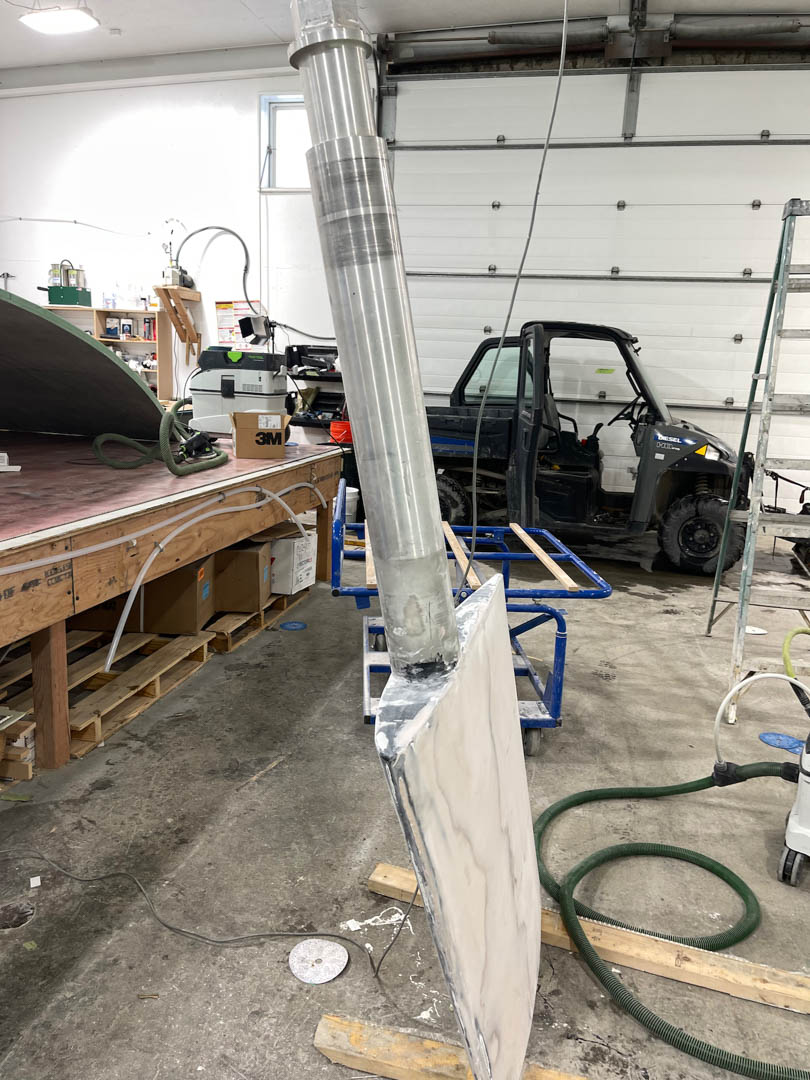
The panels on the floor are being cut to the contour of the panel they just finished and will form the two hulls. Details to follow.
I’ll pause here and check back when they are further along, we have all winter.
Stay safe.
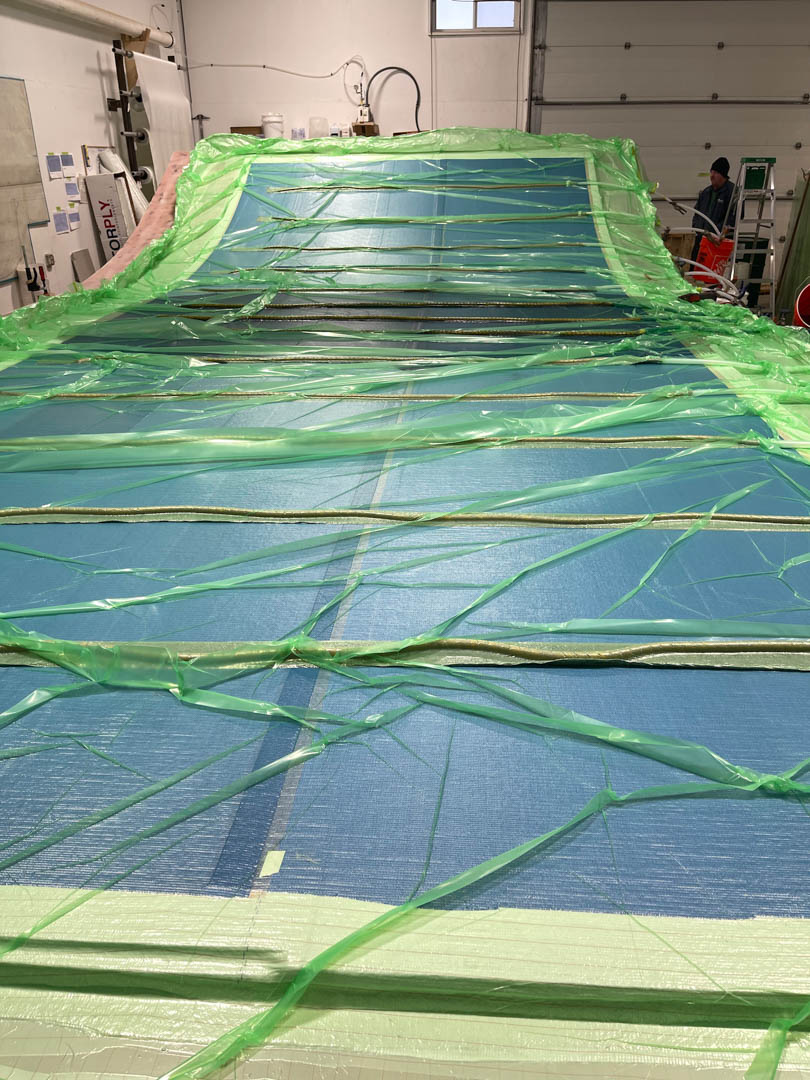

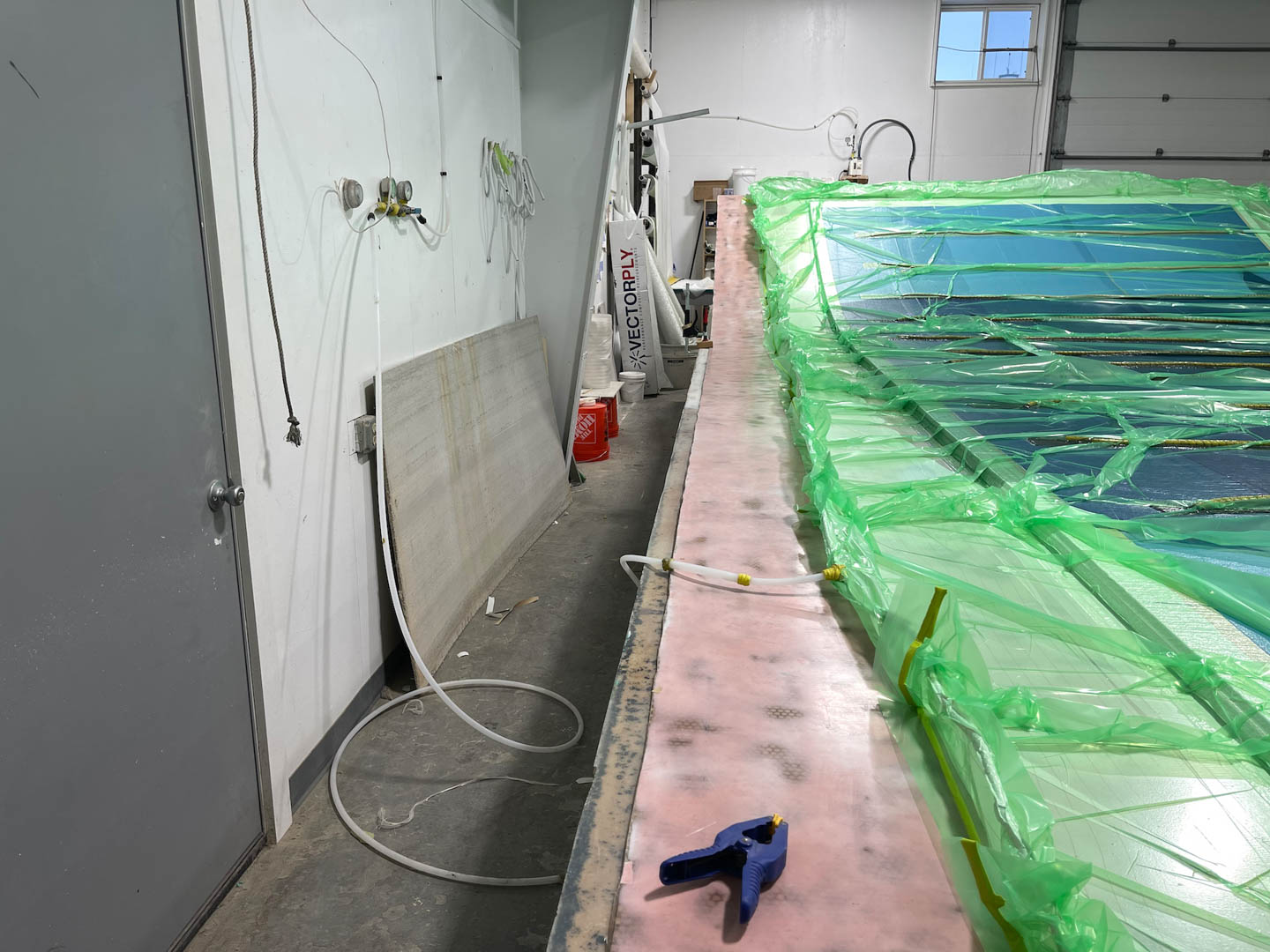
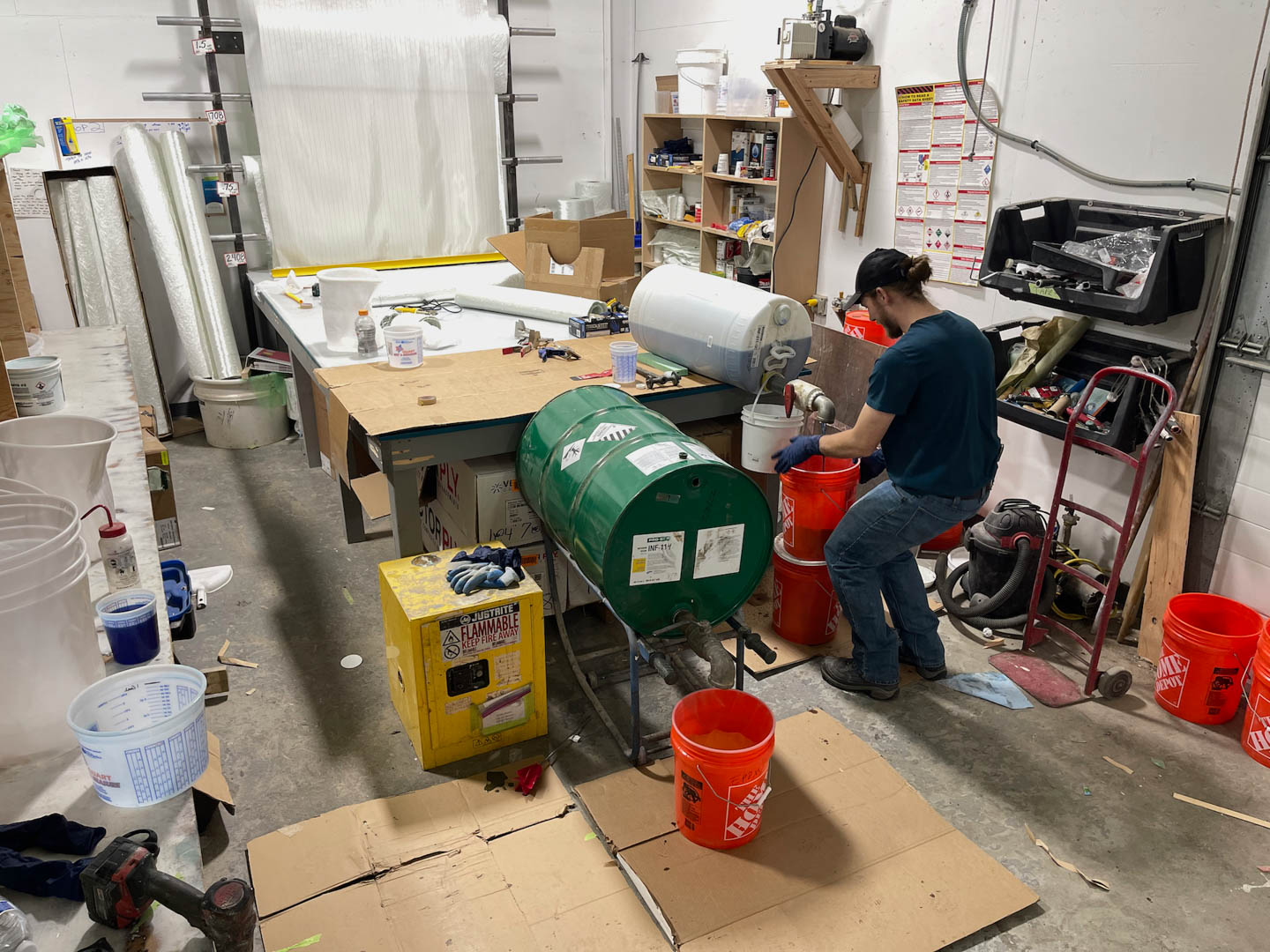
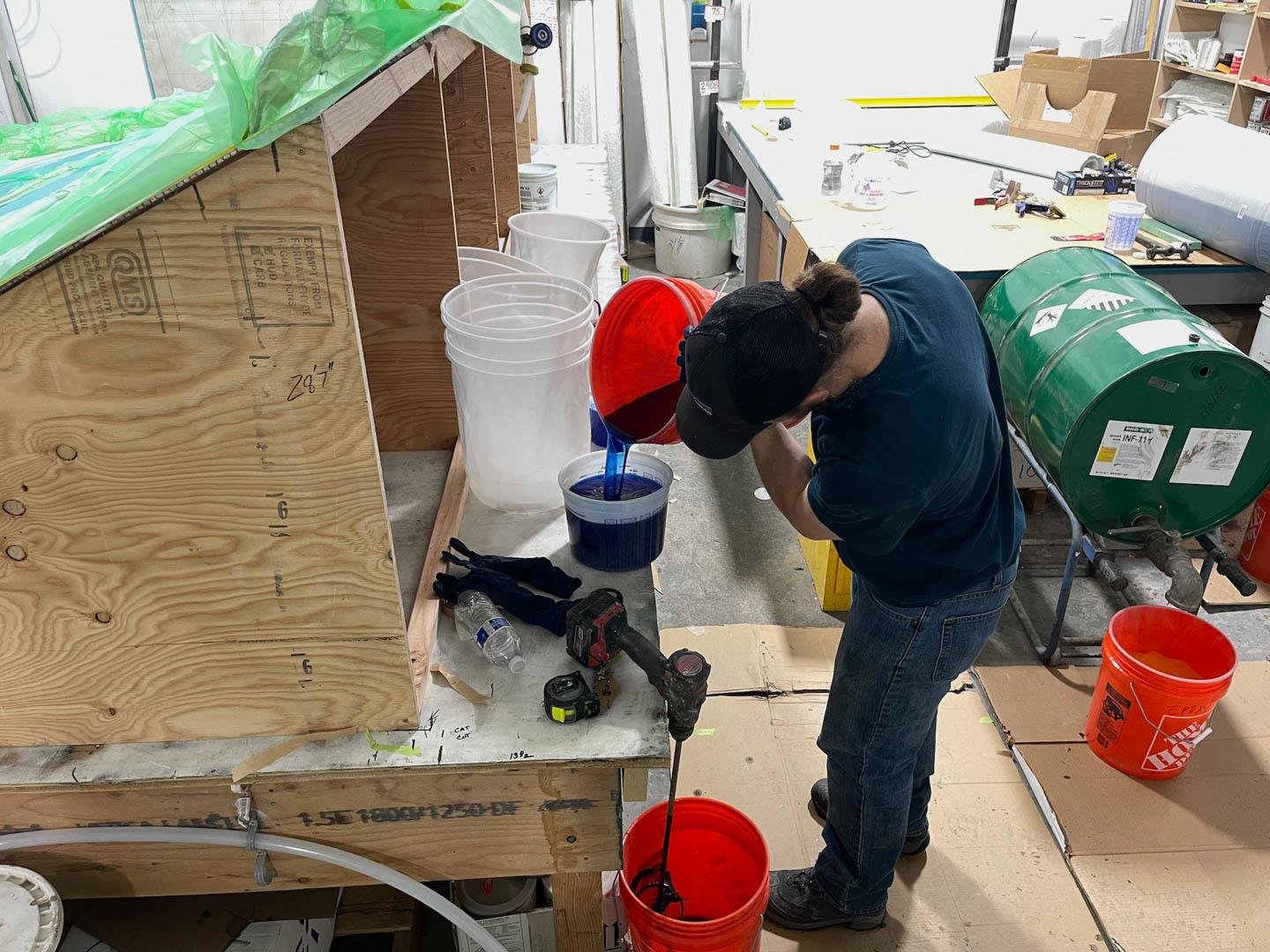
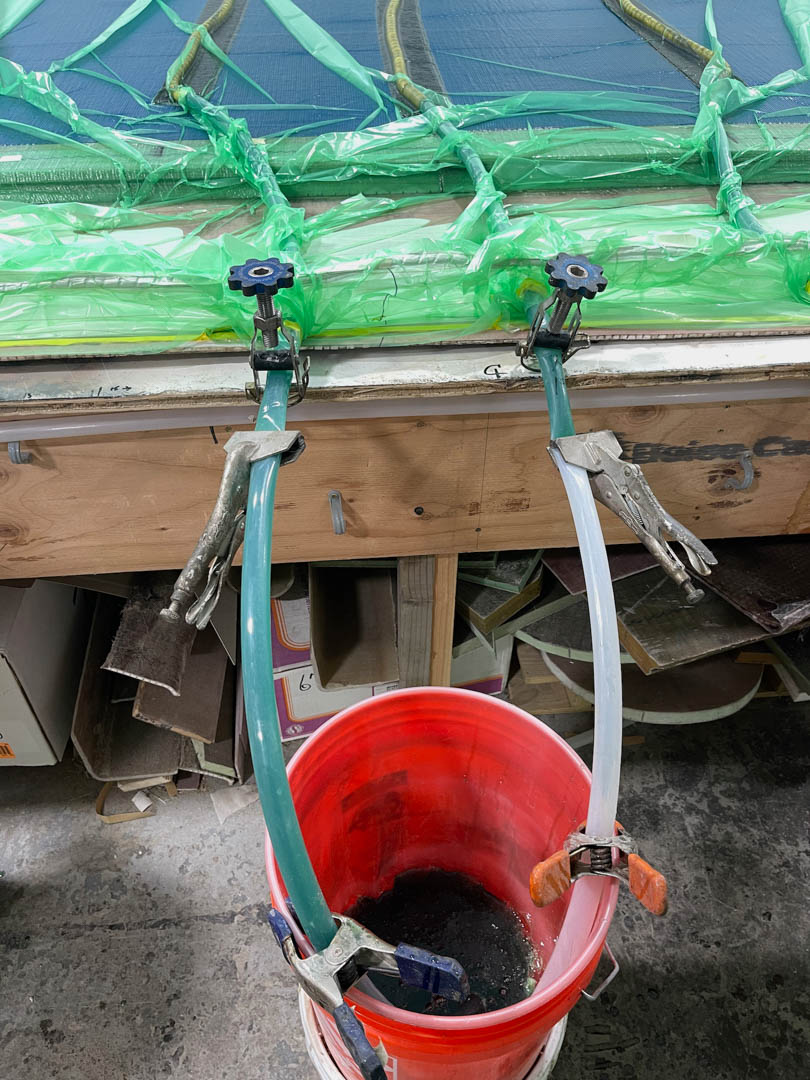
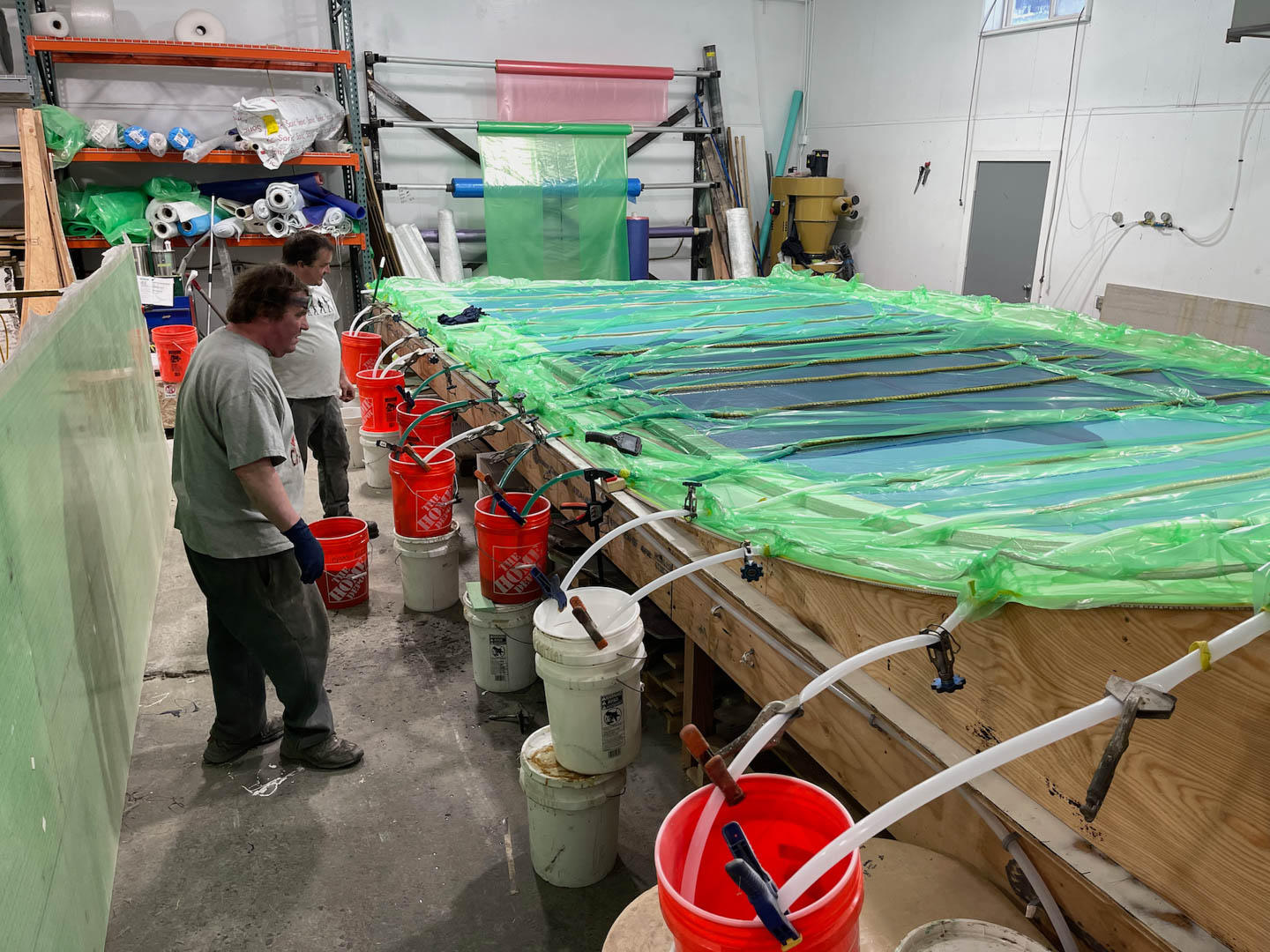
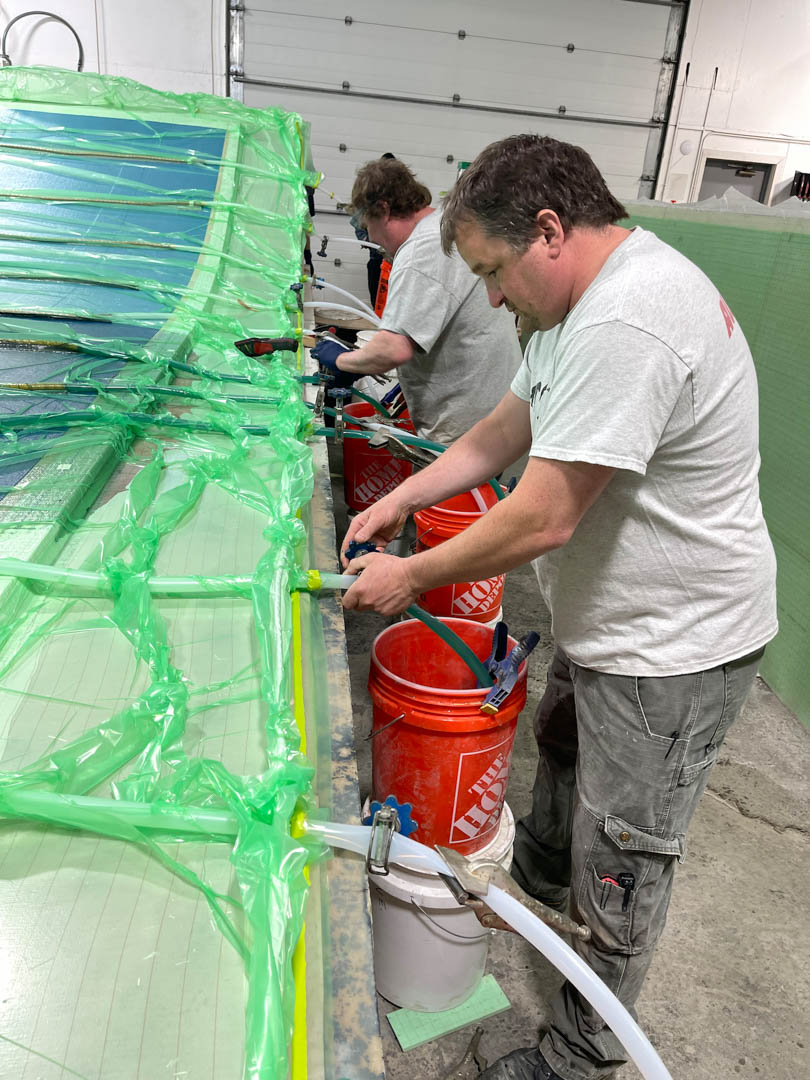
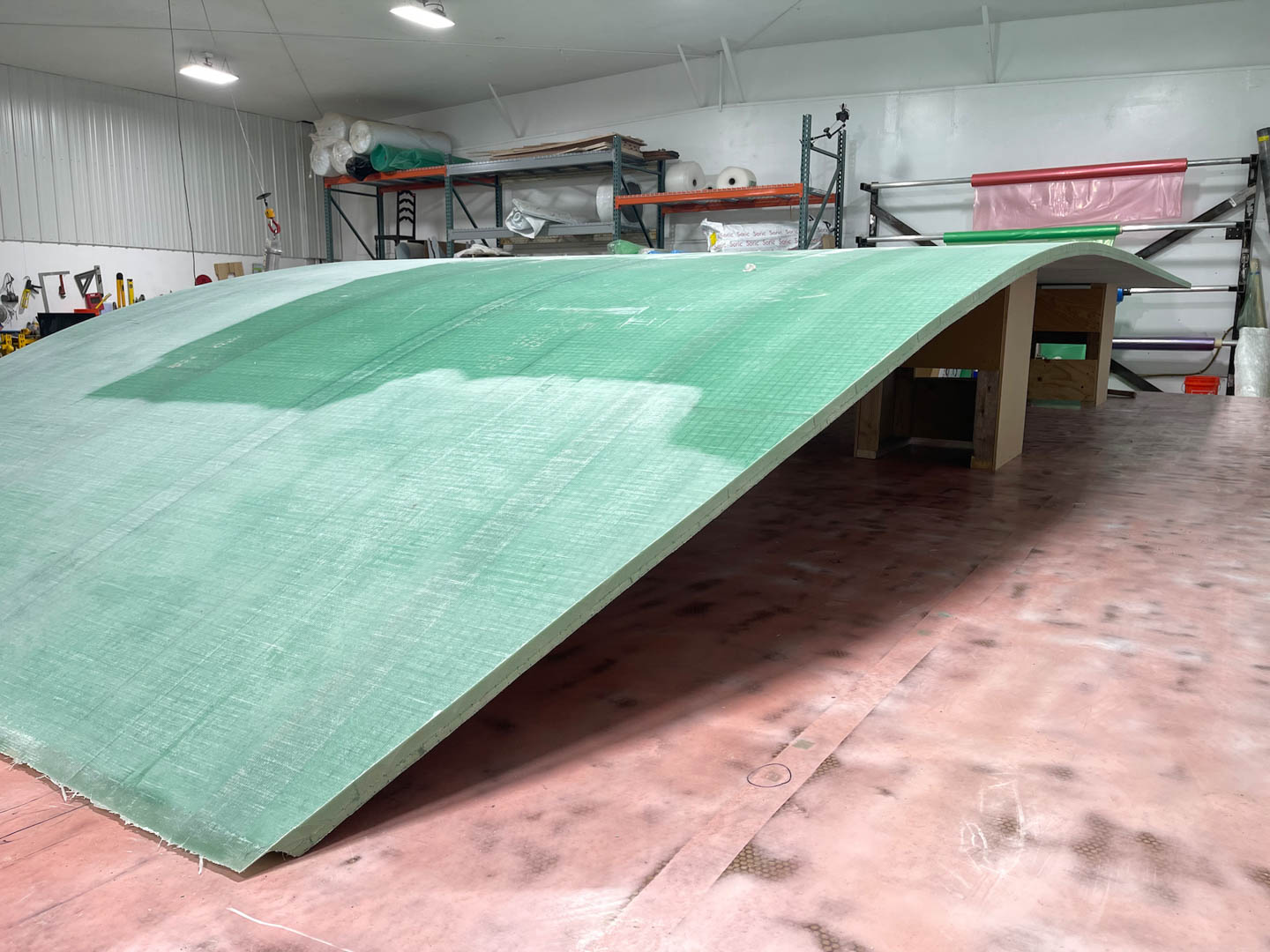
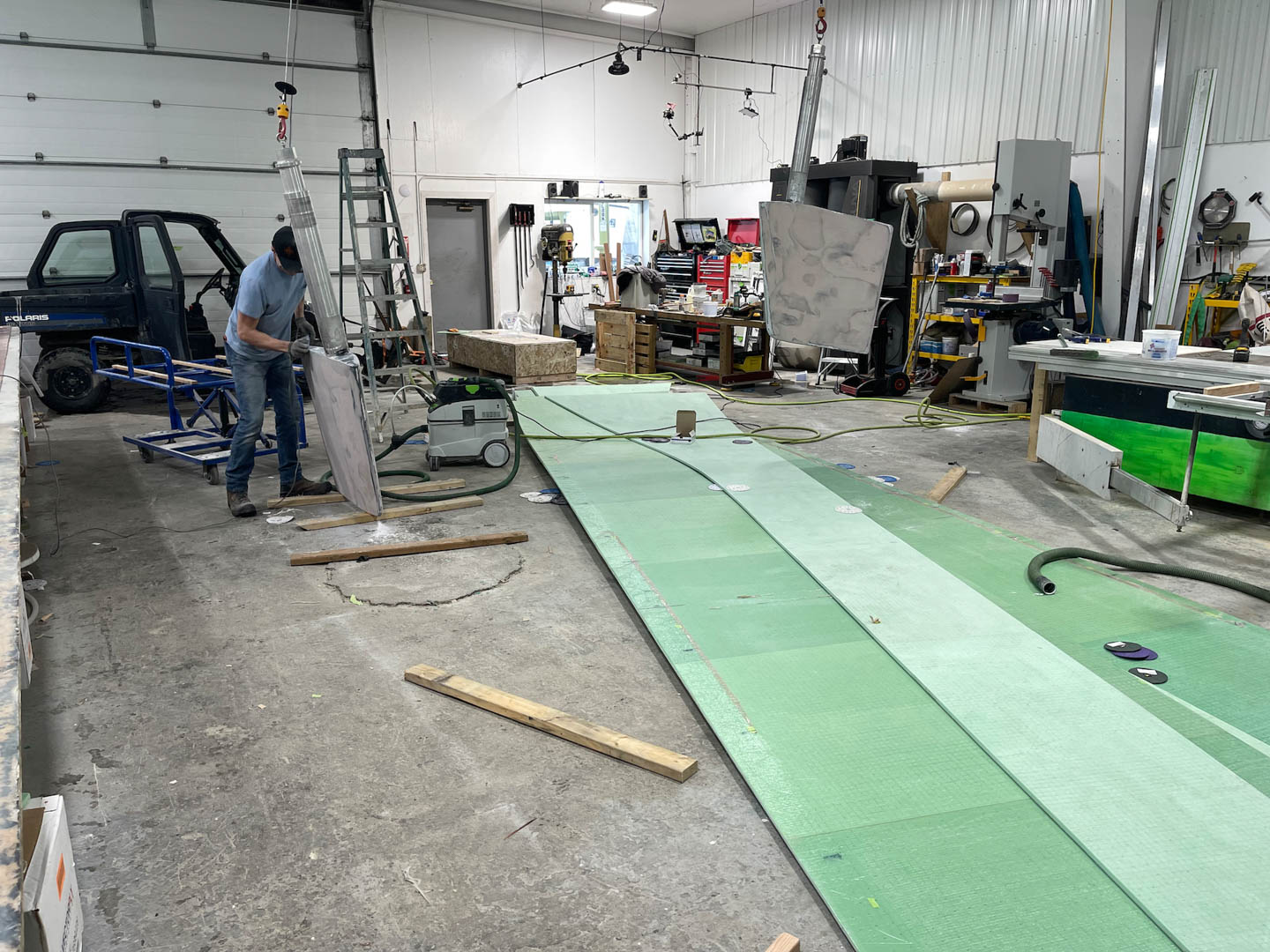
Leave a Reply